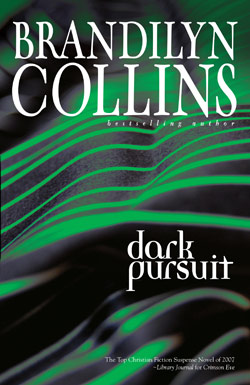The best prologues
don’t explain or set up the story, they enhance it.
Prologues
tend to have a bad
reputation—for good reason. Too many are poorly written. Many agents
and editors say to avoid them altogether, simply because they’ve seen
too many bad ones. Some readers will tell you they don’t even read
prologues because they don’t expect them to add anything to the story.
Can you imagine? The opening to your book—and a reader chooses to skip
it? Agh!
So when should you use a
prologue? You’ll hear many state the “necessity” rule: “Don’t use a
prologue unless the story absolutely requires it.” That’s the wrong
approach. Far too many authors will argue their story does
require one: “My readers won’t understand/empathize with the character
if I don’t add these pages.” If this is your reason for adding a
prologue—don’t. Fix the weaknesses in your first chapter instead. In
fact, don’t even consider using a prologue until
your first chapter is a strong opening on its own. Most of the time,
when you’ve accomplished that, the temptation to add a prologue goes
away.
The best prologues don’t explain
or set up the story, they enhance it. They add some
sort of intrigue or emotion. Or they set the tone in a unique way.
When you do use a prologue,
follow these two general principles:
1.
It should be (A) compelling, and (B) short .
2. It should be removed from the main story by either time or space.
In all generalities there are
exceptions. But let’s not argue those quite yet. First let’s establish
these basics for a good prologue.
Compelling
There is no
exception to this one. Think of a prologue not as explanation or
exposition of what’s to come but as what it is: the opening for your
novel. We tend to forget how critical that opening is. When you sit
down to write a story, picture the reluctant buyer in the bookstore
who’s never heard of you. That’s the most critical
person you’re writing the opening for, not the readers who already know
you and like your work. The typical browser scenario goes like this:
1. Spots
your novel. Something about the cover/title makes her pick it off the
shelf. (This is why covers and titles are so important.)
2. Turns book over, reads back cover copy. (Better be written well.) If
she likes it . . .
3. Opens book. Reads opening line. (This is why you want a strong one.)
If it’s good . . .
4. Reads paragraph. If that’s compelling . . .
5. Reads first page. If that’s really good . . .
6. Buys book.
This whole browsing time? Around
thirty to sixty seconds.
Is the opening to your prologue
compelling enough to sell your book to that browser? Is that critical
first page really where you want to dump a bunch of backstory that
“sets up” your first chapter?
|
If
you use a prologue, it needs
to thrum with excitement of some sort. It can be a high action scene.
It can be an outwardly quiet scene, but intense in emotion. It can even
be mere character narrative, but the voice has to absolutely grab the
reader’s attention. The point is to capture the reader’s imagination not
give information. Don’t think in terms of answering questions in your
opening. Think in terms of raising questions.
Questions keep the reader turning pages.
Short
The very word prologue
signals the reader that this isn’t part of the main story.
Let’s say the browser buys your
book. The back cover has laid out the premise. The premise contains the
inciting incident—the first major point of conflict that kicks off the
story. Your reader begins your novel, knowing this incident is going to
occur—and he’s waiting for it. He also knows, simply from reading
novels over the years, that the prologue isn’t likely to contain this
incident. He’s gunning to see the real story kick off—and he may not
wait all that long. (Some readers have more patience than others.
Women’s fiction readers in general will allow more time. Suspense
readers are notoriously impatient—they want havoc wreaked, and they
want it wreaked now.)
If a prologue stretches on for
pages, the reader is thinking, “Sheesh, and I haven’t even started the
first chapter yet. What if that first chapter takes awhile to get to
the inciting incident?” He could find himself too bored to continue.
And even if he does keep reading, he’s likely to think, “Man, slow
start. Sure hope it picks up.”
You may have read some long
prologues that you liked. That’s fine. Doesn’t mean you should try it.
It’s tricky enough writing a prologue that works in the first place. It
gets even trickier when you write a long one.
Next month we’ll take up Point
#2.

|